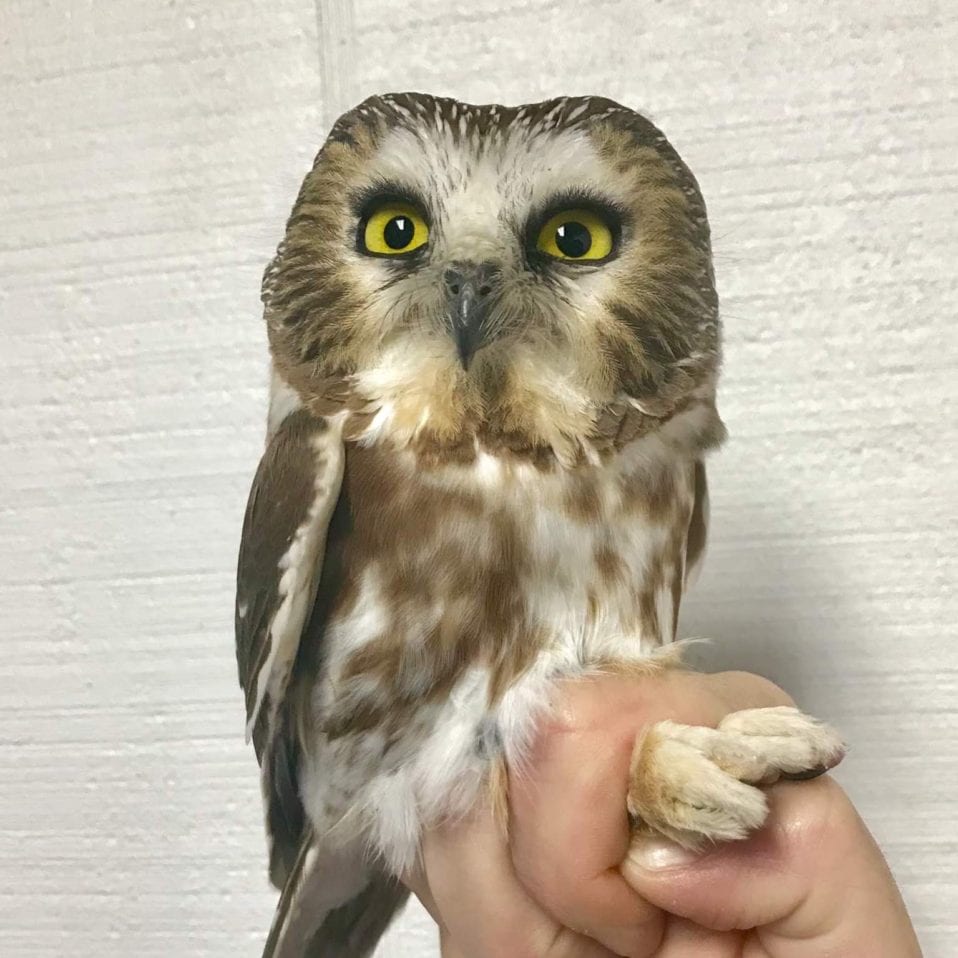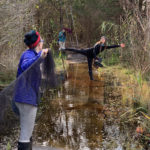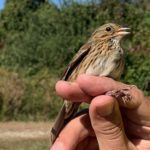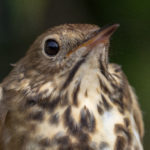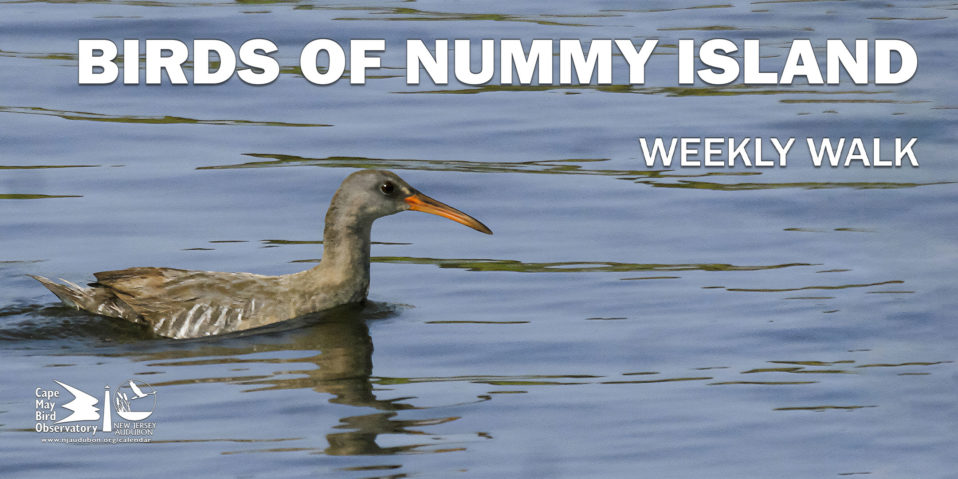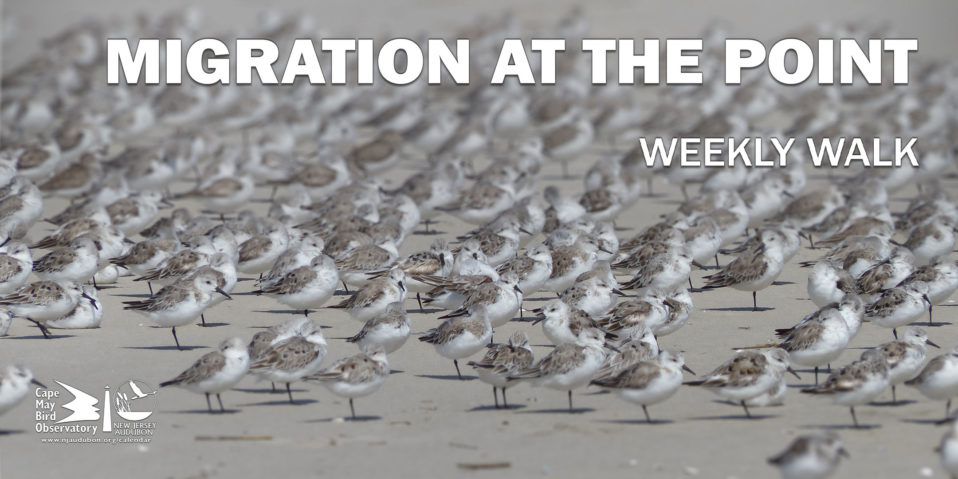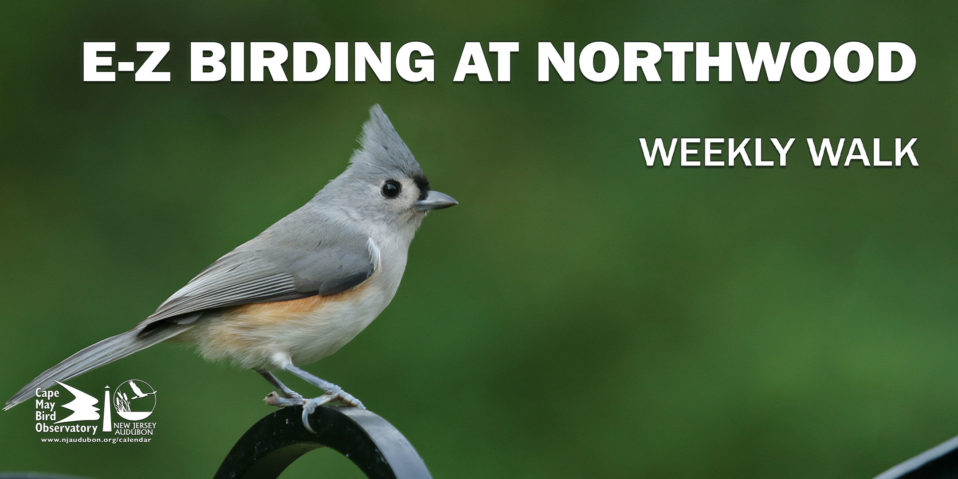Above: Our 100th species of the season! Read on for the story behind those beautiful eyes…
By Laura-Marie Koitsch, 2018 Bander In Charge
The thirteenth and final week of the inaugural season of NJ Audubon’s Cape May Banding Project, a collaboration between NJ Audubon’s Cape May Bird Observatory, The Nature Conservancy, and Cellular Tracking Technologies began with quite the surprise in the nets! On the morning of November 8th, we caught our 100th species for the season: a Northern Saw-whet Owl!
2018 has been a crazy good year for researchers studying this species. In fact, it is what is known as an irruptive year, something that researchers estimate happens every 4-6 years with NSWOs, in response to spikes in small rodent populations on their breeding grounds. Later we learned that on that same night, a station near us in Maryland caught almost 140 Northern Saw-whet Owls in one evening and another station near us in Pennsylvania caught 80. So, it is not a complete surprise that we caught one that morning! Although, whereas the other stations were specifically target netting owls, we merely opened two nets roughly 15 minutes early because it was a dark calm night & it felt “good” for something special. Overall for the morning, we processed 84 birds of 22 species, which is good diversity for this late in the season. We were treated to a rather late Red-eyed Vireo as well as two Blackpoll Warblers, both species which we expected to have already moved through the area. We also returned from a net run to find that a Carolina Wren had (presumably) entered the station through the “release” tube perhaps checking out the place either for a future nesting site. Carolina Wrens are no strangers to nesting near humans and people often find their nests in their garages, flower pots, wreaths, shoes, etc. We had been joking around since installing the release shoot that it would only be a matter of time before a Carolina Wren tried to take up residence. And no, it was not “007”, the stealthy Carolina Wren mentioned in three previous blog posts, that would have almost been too good to be true.
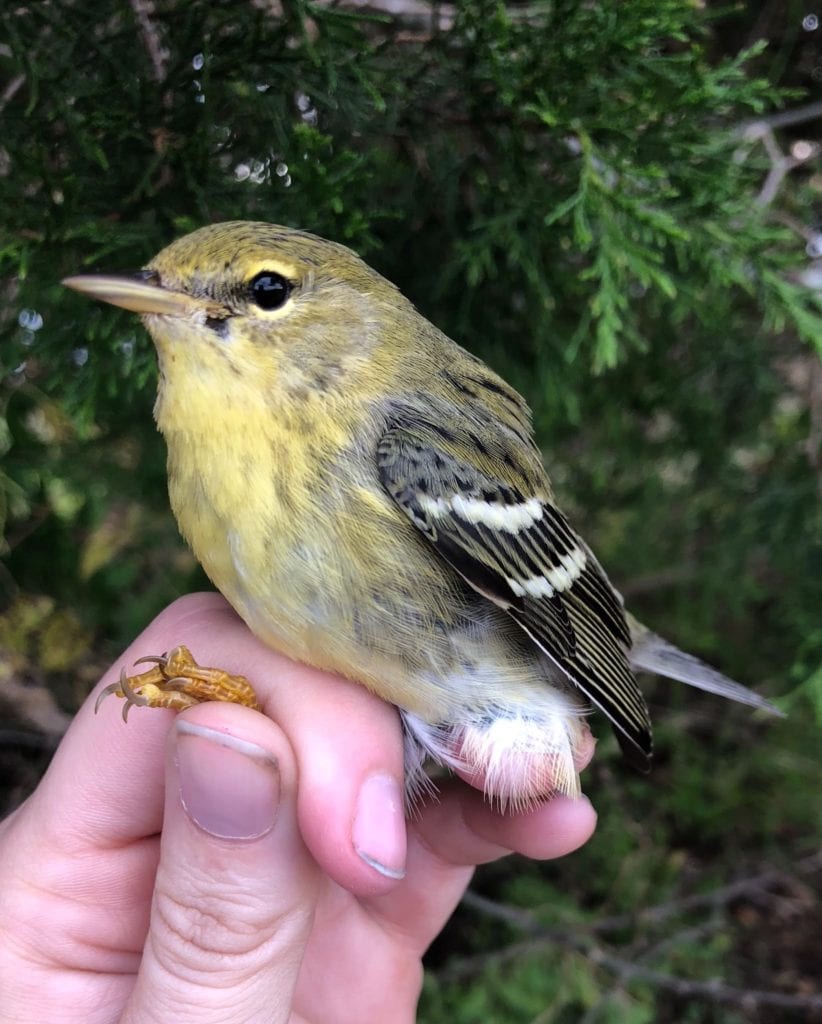
Blackpoll Warbler
There was no banding on the 9th & 10th due to high winds. On the morning of the 11th, we heard multiple Northern Saw-whet Owls calling and we flushed at least two American Woodcocks whilst opening the nets. Unfortunately, we didn’t catch either species. We did, however, still band 44 birds of 17 species, which again, we consider to be good diversity for this late in the year. November 11th was a special day as it was the first morning since October 6th that Yellow-rumped Warblers were not the top species banded. We banded 9 Song Sparrows and 8 Swamp Sparrows that morning, but only 5 MYWA! Speaking of Yellow-rumped Warblers, one thing that we’ve been noticing this fall was that many of the adults were still actively molting their flight feathers, particularly their secondaries. This was not something that we had ever seen before or, at least not in such large numbers as we had been seeing here. We estimate that we’ve taken molt scores on roughly 250+ individuals this fall: most had yet to replace the inner most two secondaries, some had yet to replace three secondaries, and some still had sheath on one or two outermost primaries. One of the greatest things about having visiting banders at our station is the free-flowing of ideas and the constant opportunities to learn from one another. On the 11th, we had two banders from Pennsylvania assisting us and, to our surprise, they, too, had been witnessing unusually late season Yellow-rumped Warbler molt this year. It was suggested that perhaps it was because we had an unseasonably warm fall (we still had “feels like” temps around 100F in September!) and the birds might not have begun their molt until later. Regardless of the reason, it was neat to hear that other banders, particularly ones from a place with over fifty years of fall banding data, also noticed such an unusual occurrence. And we’re glad that we were here to document it with photos and detailed molt scores.
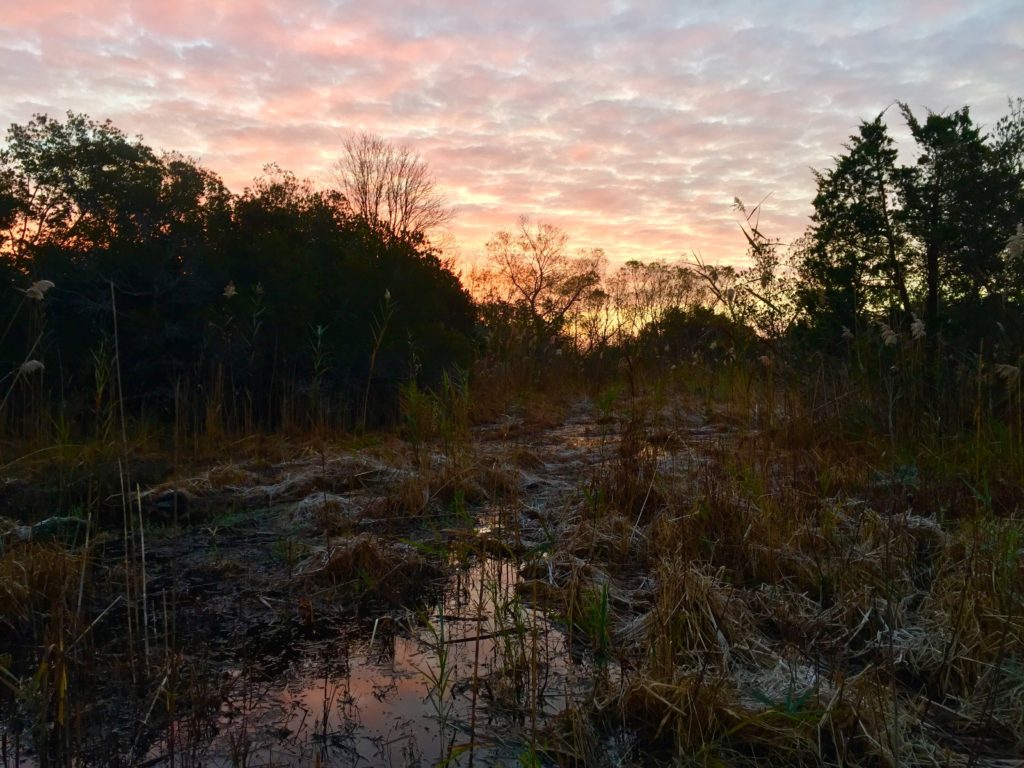
A frosty morning at sunrise
Although it had been cooler on previous mornings, November 12th was the first morning that our nets were covered in frost. Watching the sun rise over the frost-laden marsh was truly a site to behold; we all took a moment to enjoy it whilst reflecting on how fortunate we were to be here in Cape May this fall. We were also going to try for Northern Saw-whet Owls again that morning but, from roughly 5:40am until well after sunrise, there was the undeniable hoot-hooting of a Great-horned Owl, a known predator of Saw-whets. Overall for the morning we banded 48 birds across 15 species. Highlights were the four Fox Sparrows and another Northern Mockingbird (eleventh for the season!).
There was no banding on November 13th and 14th due to high winds.
Week 13 of our inaugural banding season here in Cape May was (you guessed it!) another great week! We banded 169 individuals across 30 species. Due to the high winds, we were only able to open our nets on three days for a total of 335 mist net hours (mnh). We had one new species for the season, an absolutely adorable Northern Saw-whet Owl, which brought the species total to 100. We recaptured 17 individuals (including one Carolina Wren on back-to-back days) across 8 species.
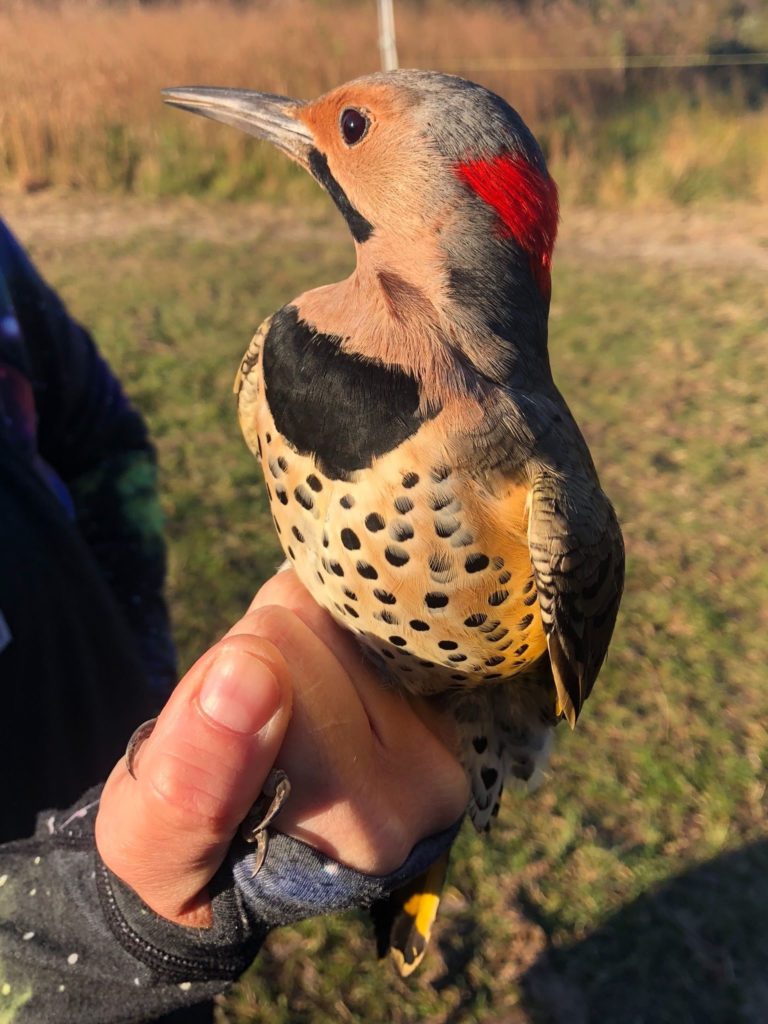
A gorgeous male (Yellow-shafted) Northern Flicker
At this point in the season, roughly 75% of the species we’ve caught thus far have left the marsh for destinations further south; we are now seeing mostly kinglets and larger sparrow species. Flocks of American Robins dominate the skies and species that winter in the area dominate our nets. The recaptures all showed very little to no weight gain, which is not too surprising as they all could potentially be birds that over-winter in the area.
So, we’ve now come to the end of an amazing first season or, have we?
Stay tuned to find out…
Week 13 Stats:
| SPECIES | NEW | RECAPS | TOTALS |
| Sharp-shinned Hawk | 1 | 1 | |
| Northern Saw-whet Owl | 1 | 1 | |
| Downy Woodpecker | 2 | 2 | |
| Yellow-Shafted Flicker | 1 | 1 | |
| Red-eyed Vireo | 1 | 1 | |
| Carolina Chickadee | 2 | 2 | |
| Red-breasted Nuthatch | 1 | 1 | |
| Brown Creeper | 8 | 8 | |
| Carolina Wren | 1 | 4 (1) | 5 |
| Golden-crowned Kinglet | 16 | 16 | |
| Ruby-crowned Kinglet | 7 | 7 | |
| Hermit Thrush | 7 | 1 | 8 |
| American Robin | 9 | 1 | 10 |
| Gray Catbird | 1 | 1 | 2 |
| Brown Thrasher | 3 | 1 | 4 |
| Northern Mockingbird | 1 | 1 | |
| Purple Finch | 3 | 3 | |
| American Goldfinch | 2 | 2 | |
| Field Sparrow | 2 | 2 | |
| Fox Sparrow | 6 | 6 | |
| Song Sparrow | 14 | 14 | |
| Swamp Sparrow | 23 | 23 | |
| White-throated Sparrow | 10 | 1 | 11 |
| Slate-colored Junco | 1 | 1 | |
| Yellow-breasted Chat | 1 | 1 | |
| Baltimore Oriole | 1 | 1 | |
| Orange-crowned Warbler | 1 | 1 | |
| Blackpoll Warbler | 2 | 2 | |
| Palm Warbler | 2 | 2 | |
| Yellow-rumped (Myrtle) Warbler | 35 | 6 | 41 |
| Northern Cardinal | 6 | 6 | |
| TOTALS | 169 | 13 | 182 |
Total species this season: 100
Total birds banded this season: 8,017




